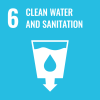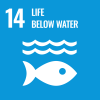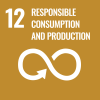HSWRI researchers were the first to successfully spawn and rear the larvae of California yellowtail from broodstock collected in the early 2000s. California yellowtail is an sportfish indigineous to southern California which is marketed as hamachi. Extensive research has documented the optimal conditions for farm raising this desirable finfish, which is usually marketed in sushi restaurants as hamachi. Farm raising of these fish will ease pressures on wild fish, reduce overfishing and provide a clean and reliable source of this healthy seafood.
HSWRI is conducting continuing research on these fish with ground breaking results. For example, a captive population of California yellowtail (Seriola lalandi) was used to document spawning patterns, including measures of egg production, population fecundity and egg and larval quality from 2007 to 2010. Spawned eggs were also used to document larval development and to develop rearing techniques for aquaculture in the region. This research represented the first documentation of successful spawning and larval rearing for S. lalandi in the eastern Pacific.








More information of HSWRI’s Farm to Table program
Selected Publications:
Stuart, K., And M. Drawbridge. Captive spawning and larval rearing of California yellowtail (Seriola lalandi). Aquaculture Research. 44:728-737. 2012.
Bergman, A.M., Trushenski, J.T., and Drawbridge, M. Addition of emulsifiers to hydrogenated soybean oil-based feeds for California Yellowtail. North American Journal of Aquaculture. 2018.
Buentello, A., D. Jirsa, F. T. Barrows and M. Drawbridge. Minimizing fishmeal use in juvenile California yellowtail, Seriola lalandi, diets using non-GM soybeans selectively bred for aquafeeds. Aquaculture. 435:403-411. 2015.
Hawkyard M, Stuart K, and Drawbridge M. The early life stages of California yellowtail (Seriola dorsalis) and white seabass (Atractoscion nobilis) respond to food particle taste. Aquaculture. 512: 734285. 2019.
Rombenso, A.H., Trushenski J.T., Jirsa D., Drawbridge M. Docosahexaenoic acid (DHA) and arachidonic acid (ARA) are essential to meet LC-PUFA requirements of juvenile California Yellowtail (Seriola dorsalis). Aquaculture. 463:123-134. 2016.
Rotman, F., Stuart, K., Drawbridge, M. Effects of taurine supplementation in live feeds on larval rearing performance of California yellowtail, Seriola lalandi and white seabass, Atractoscion nobilis. Aquaculture Research. 1-8, doi:10.1111/are.12964. 2016
Salze GP, Davis DA, Stuart K, and Drawbridge M. Effect of dietary taurine in the performance of broodstock and larvae of California yellowtail Seriola dorsalis. Aquaculture. 493: 192-203. 2019.
Schwebel L, Wegner N. Lowery M, Stuart K. Swim bladder inflation failure affects energy allocation, growth, and feed conversion of California Yellowtail (Seriola dorsalis) in aquaculture. Aquaculture. Volume 497, 1 December 2018, Pages 117-124. 2018.
Smith E, Stuart K, Hawkyard M, Barrows F, Rust M, Drawbridge M. Spawning dynamics and egg production characteristics of captive Seriola dorsalis assessed using parentage analyses. Aquaculture Research. 44 (5). 2018.
Stuart K, Hawkyard M, Barrows F, Rust M, Drawbridge M. Evaluation of dietary taurine concentrations in microparticulate diets provided to larval California yellowtail (Seriola dorsalis) post larvae. Aquaculture Nutrition. 24(4). 2018.
Stuart K, Johnson, R. Armbruster L. Drawbridge M. Arachidonic acid in the diet of captive California yellowtail Seriola dorsalis and its effects on egg quality. North American Journal of Aquaculture. 80:97-106. 2018.
Stuart K. and M. Drawbridge. The effect of light intensity and green water on survival and growth of cultured larval California yellowtail (Seriola lalandi). Aquaculture. 321: 152-156. 2011.
Stuart, K., and M. Drawbridge. Spawning and larval rearing of yellowtail amberjack (Seriola lalandi) in southern California. Bulletin Fisheries Research Agency. 35:15-21. 2012.
Stuart, K., and M. Drawbridge. The effect of photoperiod on larval culture performance of two marine finfish species. Aquaculture. 360-361:54-57. 2012.
Stuart, K., Rotman, F., Drawbridge, M. Methods of microbial control in marine fish larval rearing: clay-based turbidity and passive larval transfer. Aquaculture Research. 2015:1-11. 2015.
Stuart, K.R., M. Keller and M. Drawbridge. Efficacy of formalin and povidone-iodine disinfection techniques on the eggs of three marine finfish species. Aquaculture Research. 41:e838-e843. 2010.









